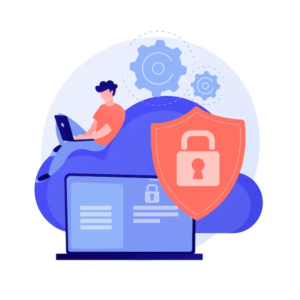Securing Your Cloud Applications: Best Practices for Developers
Securing cloud applications is paramount in today's digital landscape. It is important to protect sensitive data, mitigate cyber threats, and ensure compliance by implementing robust security measures for your cloud-based solutions.
As more and more organizations are adopting cloud applications, the security of cloud applications has become a major concern. Businesses of all sizes are leveraging cloud applications for efficiency, flexibility, scalability, and cost-effectiveness. However, with all these benefits come threats of data security in the cloud that need to be addressed.
Cloud Applications Security: Best Practices for Developers#
Cloud applications store sensitive data which in the wrong hands can cause financial and reputational damage. That is why developers need to implement best practices for cloud security. These practices can mitigate risk and save the cloud from cyber-attacks and data breaches.
In this article, we will explore some of the key practices for cloud security. We will cover topics like identity and access control, encryption, and security monitoring. We will also explore the features of Nife, a cloud platform that provides reliable and efficient cloud application hosting for developers. Let's dive into the article.
Identity and Access Management (IAM)#

Identity and Access Management is an important part of cloud security. It involves the management of access control, passwords, and cloud resources. Here are the best practices for IAM in cloud applications.
Password Management is the first step in IAM. Passwords are the primary method of accessing information. The best practice for creating strong passwords is to use a mixture of lower and upper case letters, numbers, and special characters. Users should be encouraged to change passwords regularly.
Multi-Factor Authentication (MAF) provides an extra layer of security. It involves requesting a one-time password from users, generated by an app or using a fingerprint each time a person logs in to the cloud.
Role-Based Access Control (RBAC) is also a useful practice in cloud computing for developers. It helps organizations distribute and monitor cloud resources effectively. It involves distributing access to resources among users according to their assigned roles. This practice helps ensure the security of sensitive areas of the cloud.
Monitor Access: User access and activities should be monitored to identify potential threats. This includes tracking authentication, failed login attempts, and location tags for unusual activities. It helps mitigate risk and take necessary action.
There are several IAM services and tools in cloud computing for developers such as Google Cloud Identity, AWS IAM, and Azure Active Directory.
Encryption:#
Encryption is another important practice for data security in cloud. It is the process of converting data into code using algorithms. It helps protect data from hackers. Here are the best practices of encryption for cloud computing security.
Encrypting Data at Rest and In Transit:#
Data on the cloud should be encrypted whether it is at rest(on the cloud) or in transit. Data encryption on the cloud secures it in case of data breaches and cyber-attacks. While in transit encryption keeps it secure in case someone interferes between the cloud and the end user. Various cloud platforms provide encryption leverage which developers can leverage for their use.
Usage of key Management Algorithms:#
Another important practice for data security in cloud is the use of key management tools. Often encryption keys are distributed in different places within a cloud infrastructure which makes the cloud applications vulnerable. Developers should use key management tools to keep all the encryption keys secure in one place.
Security Monitoring#

Security monitoring is also an important aspect of data security in cloud. It involves continuous monitoring of cloud resources to identify and respond to potential threats and attacks. It provides live accurate insights on cloud security, allowing you to take action. Here are the best practices of security monitoring for cloud computing security.
Continuous Monitoring:#
Cloud Applications are highly complicated. It is important to continuously monitor activities across all the resources for cloud computing security. That's where intrusion detection and prevention systems (IDPS) come in. This system tirelessly looks for vulnerabilities, potential threats, and unusual activities. Once any vulnerabilities or threats are found it neutralizes it and keeps your applications safe and sound.
Logging and Log Analysis:#
In cloud computing for developers logging and log analysis mechanisms are very important. It helps identify unusual activities and find security gaps. Logging data also helps trace back intruders and compromised systems. With logging data valuable you can get valuable insights that can be used for cloud computing security.
Alerting and Response:#
It is important to have a proper alerting and incident response mechanism in cloud computing for developers for data security in cloud. In case of a security incident, it is crucial to have an alerting mechanism and incident plan set up. This will help minimize the effect of any loss. Incident plans must clearly define responsibilities and every step of the way to secure the cloud applications.
Nife's Solutions for Securing Cloud Applications#

Nife is a cloud platform that provides robust security solutions and offers cloud application hosting for developers. Nife understands the current security needs and provides a multi-layered approach. It provides a robust RBAC(Roll Based Access Control) feature to keep your resources in check and minimizes the risk of unauthorized breaches.
With Nife, developers can save user-specific data as secrets in transit with industry-standard encryption algorithms and seamless key management.
Nife also has built-in continuous monitoring and alerting mechanisms to scan all cloud resources periodically for vulnerabilities. What sets Nife apart is cloud application hosting for developers.
Nife understands developers want a streamlined hosting experience. That is why it allows them to only work on development without worrying about underlying infrastructure and security issues.
Nife is helping businesses secure their cloud applications with robust security features.
Visit Nife to get started on your secure cloud journey
Conclusion:#
Securing cloud applications is crucial in this modern age. To cope with evolving threats developers need to adopt best security practices to protect sensitive data.
Throughout this article, we have explored best practices for securing cloud applications, which include Identity and Access Management (IAM), the Use of encryption, and security monitoring. In the end, we discussed Nife, a cloud platform that provides robust security for cloud applications.